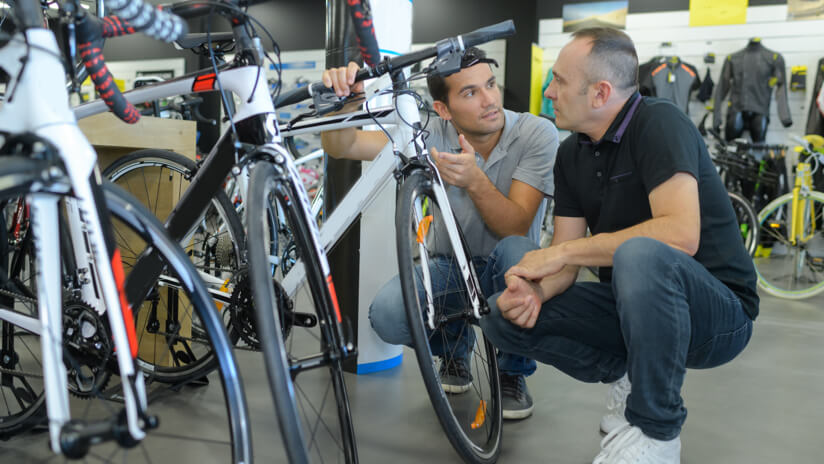4 ways customer retention benefits your business

The importance of good customer relationships
In a world where your customers are spoilt for choice, loyalty matters. To keep your customers coming back for more, it’s important to build strong customer relationships. Not only do these connections help to increase repeat purchases, but they may also expand brand awareness.
When your customers trust you, they’re more likely to shop and engage with your business again. Building customer loyalty and retention all comes down to your customer relationship management strategy.
What is customer retention?
As you may have guessed by the name, customer retention refers to a business’s ability to retain its customers over time. A percentage-based metric that you can track periodically, customer retention measures how many customers are retained by the end of a certain timeframe.
Why is customer retention so important?
Many small businesses consider customer retention a key performance indicator (KPI). This is because building loyal relationships with customers and other stakeholders helps small businesses to keep costs down and expand their reach via word-of-mouth. So, what are the core business benefits of customer retention?
Customer retention can help save you money
Retaining customers can be more affordable than reaching new customers. Keeping existing customers happy, is about delivering great customer service to help improve ongoing customer satisfaction. Reaching new customers, on the other hand, often involves sales and marketing acquisition costs. These can outweigh investments made in managing customer relationships.
Customer retention can deliver a great return on investment (ROI)
According to the Prescription for cutting costs report by management consulting firm Bain & Company, a 5% increase in customer retention may produce more than a 25% increase in profit. This is because return customers tend to buy more from a business over time. Customer retention programs, when done well, can have a proven return on investment.
Customer retention helps encourage brand loyalty
The customers you retain tend to buy more products (and book more services) than new customers. Studies have also shown that retained customers spend more than newer customers. This level of loyalty can help your business make more sales, more often, and helps boost your brand reputation.
Retained customers are more likely to recommend your business
The longer customers shop and book with your business, the more likely they are to mention you to family and friends. This is what’s referred to as word-of-mouth marketing (WOM marketing). This is essentially free advertising triggered by positive customer experiences with your business.
What’s the difference between customer retention and customer loyalty?
At first glance, customer retention and loyalty seem similar, but there are differences worth noting when thinking about your customer relationship management.
Customer retention is about transforming customers who shop with you once into repeat customers. You can do this by continually keeping your existing customers engaged with your product or service.
Customer loyalty, however, is the process through which your customers become ambassadors of your product. So, while a retained customer may keep returning to your business, a loyal customer is someone who returns often while also referring others.
Learn more about how to improve customer experience and boost customer loyalty.
Should you focus on customer acquisition or retention?
As a business owner, you're likely familiar with these terms. But, to make it clear:
- Customer acquisition is the process of attracting new customers.
- Customer retention is everything you do to keep existing customers in your business, usually by delivering superior customer service.
Some businesses focus on starting new customer relationships, others prioritise loyalty to customers that have been with them for some time. Where you place your focus depends on your business goals, but many small and medium businesses in particular benefit from prioritising customer retention due to its proven return on investment (ROI).
Ways of managing customer relationships to help improve customer retention
According to Business Victoria, a customer service strategy helps you to keep your existing customers and to build new business via referrals. To keep customers with customer service excellence, consider regularly optimising the following key service activities:
- Encourage a customer-first culture among your team to help improve customer experience.
- Regularly update your website or social media platforms with information on your products and services.
- Offer a combination of online and offline support to meet customer expectations.
- Align your point-of-sale (POS) system with the preferred payment methods your customers want.
- Give customers the information they need to shop with you, such as an up-to-date returns policy for your online business.
- Be as responsive as possible when customers engage you, as this will help build trust.
- Consider launching a loyalty program to help encourage repeat business.
Remember, your customer relationship management style has a direct influence on customer retention. So, no matter the size of your business, showing loyalty to customers will, in turn, help encourage them to remain loyal to you.
Grow your online presence with digital experts
Whether you need a website or a complete digital marketing strategy, we can help your business to thrive online.
Explore more on this topic
Empower yourself to get the most from technology
Learn how to choose the right technology solutions. Get help to boost efficiency, build skills, and integrate tech.




